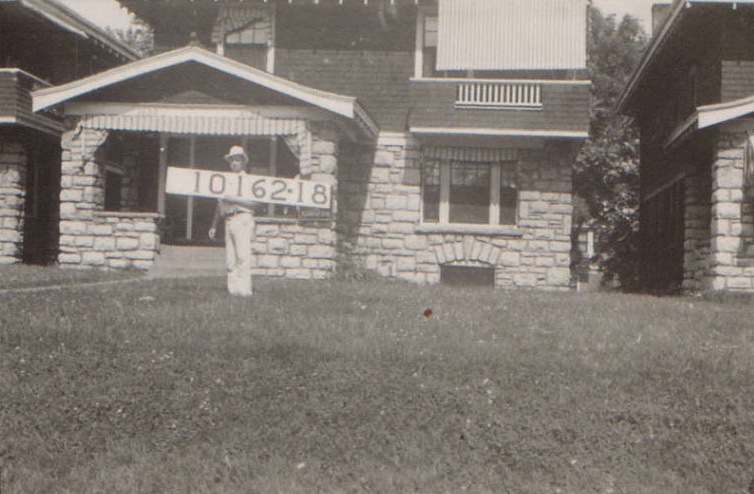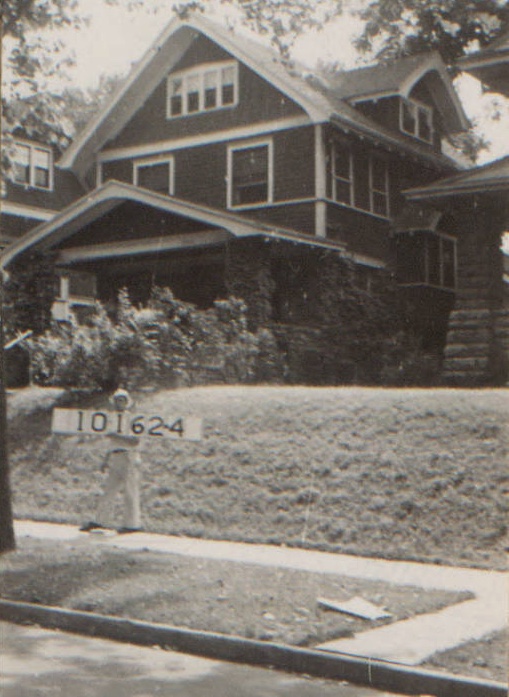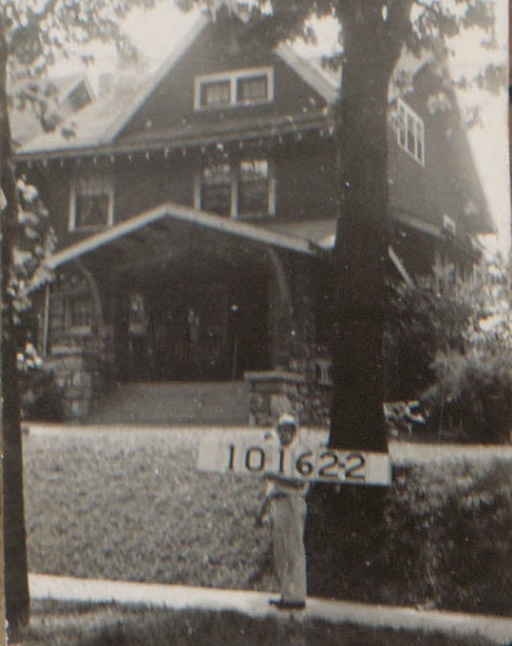
Their original developer described the 3900 blocks of Troost and Forest as an “ideal residence park where all homes are complete, well-designed, original and artistic.” Most of the homes were built around 1909-1910, and since then, the neighborhood has had its ups and downs, but current residents say Manheim is making a comeback.
The block was originally part of the estate of J.J. Squier, whose estate was well-known by Kansas Citians at the turn of the 20th century. A deer park surrounded by an iron fence drew visitors.

1909 Kansas City Star newspaper ad for Squire Manor.
“The city appeared to have passed the estate in its rapid growth south,” the Kansas City Times reported in 1909. But a few years before that story appeared, a man named Robert Jones, the son-in-law of Squier himself had put forth a novel idea for laying out a new suburb of Kansas City. The Star called Jones “the man who dared to make a crooked road.”
Jones was bothered by the way most south-side Kansas City areas were being developed: roads that went straight east and west or north and south, with homes squeezed in too close together and looking too much alike to suit his taste. He detailed a new way of doing things as he created Squier Manor from 37th to 40th Streets, from Troost to the Paseo.
“Now, look at this row of houses. There is nothing of ostentation in these houses, you see. They’re houses first – simple, livable. Every one is of a different design. But that isn’t the only thing. Instead of crowding them all up to within a few yards of the sidewalk in order to make a backyard for the benefit of the kitchen I have placed them as far back as convenient and given them the advantage of a good big strip of front garden, and at the same time for the street, quiet another air of space and proportion. There are three advantages in that bit of planning alone, the houses look better, the street looks wider, and the garden is respected as a garden, not as a yard.”
However, Jones did not stop with the design of the homes. He laid out the roads to follow the natural curves of the land.
“I set out with the belief that nothing could be too good for Kansas City,” he told the Times. And I have had no reason to change my program. People who buy homes in Kansas City want something that will be beautiful outside as well as inside. And more and more they are coming to see where a lot depends on settling in a neighborhood that has been deliberately planned in such a way as to insure its remaining a pleasant district to live in.”
By the 1940s, when a set of photos of each home was taken, the block was a a typical middle-class area of Midtown.
























As part of our Uncovering History Project, the Midtown KC Post is examining each block in Midtown. A set of 1940 tax assessment photos is available for many blocks.
Like many areas of Kansas City, this block was subject to “white flight” around the early 1970s. At a celebration of Manheim’s “grandmothers,” who have lived in the neighborhood for many decades, Arvern Hughes shared her experience living at 39th and Forest for 46 years. She recalled that when she moved to Mannheim, there were only two black families, but more black families moved in and the neighborhood declined for a while. Now, she says, Manheim is making a comeback as a racially-mixed area.
Life in Manheim Park from Midtown KC Post on Vimeo.
Historic photos courtesy Kansas City Public Library/Missouri Valley Special Collections.
WOW! I lived on 39th & Forest growing up in the fifties and sixties. This picture of the house at the corner of 39th & Forest is where Joyce Menzie lived. This house has been in many of my dreams. I lived in the middle of the block on the other side, but we kids knew a number of our neighbors. I see a picture of the home of Lorna Dyche, one of the kids we played with.
I lived at 39th and Forest too! We bought 3923 in May of 1950 from the Wileys. I was 3 but I remember Suzy Spindell coming by to welcome us on the day we moved in. The Cargills lived next door to the south. Next to them were the Schultz family and next to the Schultzes were the Wishmans. The Bellingers lived to the north, then the Joneses and then the Dyches. The Picketts lived directly across the street and the Spindells lived next to them to the south.